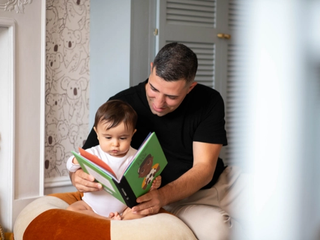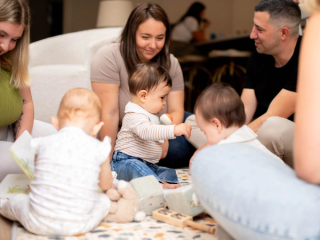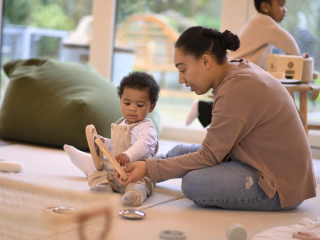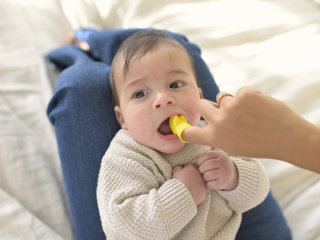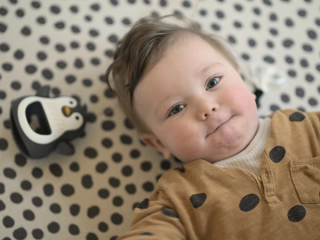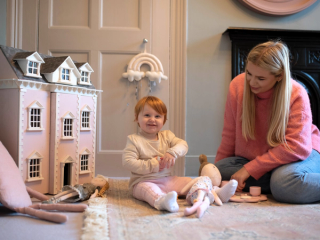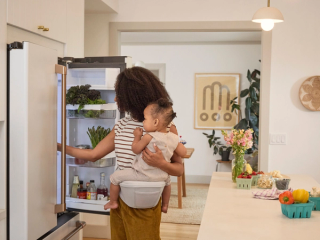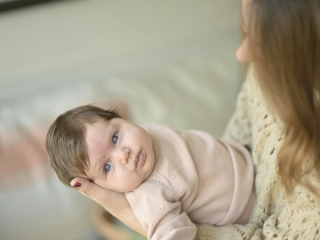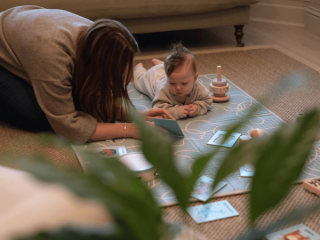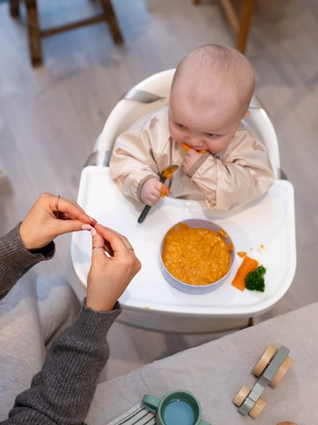
- Home
- Advice Hub
- Baby
- Bonding & Development
- A Guide To Baby Sign Language
A guide to Baby Sign Language
In this guide, we explore what Baby Sign Language is, the benefits it offers, and how you can start incorporating it into your daily routine with your baby.
As parents, we are constantly seeking ways to bridge the communication gap with our babies, especially before they can verbalise their needs. Baby sign language has emerged as a powerful communication tool in fostering early communication between parents and babies. In this guide, we'll explore what baby sign language is, the benefits it offers, and how you can start incorporating it into your daily routine with your baby.
What is baby sign language?
Baby sign language involves using gestures to communicate with babies before they can speak fluently. There is not one universal group of gestures or signs that are used with babies, but most “baby signs” are based on Makaton (key word signing), British Sign Language (BSL) or American Sign Language (ASL). These signs are often modified to suit a baby's motor skills and understanding and are used alongside speech.
To sign or not to sign?
Many parents feel unsure about whether to teach sign language to their baby. One common question parents ask is whether teaching baby sign language will impede their child's speech development. Research suggests otherwise. In fact, studies have shown that babies who learn sign language tend to develop spoken language skills at a similar rate to their peers and may even exhibit enhanced communication skills. Using baby sign language can help get your child’s attention and support their understanding as well as giving them a way of expressing themselves. Baby sign language can complement spoken language rather than replace it, providing an additional means of expression for your little one, which can be a great way for reducing frustration for both babies and parents! However, using baby sign language is just one way of supporting communication development and is not necessary for all children, so the decision whether to sign or not is personal to each family.
How to teach your baby sign language?
Teaching baby sign language can be a fun and rewarding experience for both you and your baby. Here are five top tips to get started:
- Start simple: Begin with a few basic signs that relate to objects or actions your baby encounters daily, such as "milk," "more," "eat," or "sleep."
- Use repetition: Consistent repetition is key to helping your baby understand and remember signs. Incorporate signs into your daily routines, such as during feeding, playtime, or nappy changes.
- Be patient: Like any form of learning, mastering baby sign language takes time and patience. Praise and encourage any of your baby's attempts to use signs, even if they're not perfect. Positive reinforcement will motivate them to keep trying.
- Make it fun: Learning through play is effective for babies. Incorporate signs into songs, rhymes, and interactive games to make the learning process enjoyable for both of you.
- Be consistent: Consistency is crucial for your baby to grasp the meaning of signs. Use the same signs consistently in context and encourage other caregivers to do the same. Remember to talk at the same time as signing!
Baby sign language offers a unique opportunity for parents to communicate with their babies before they can talk, fostering early language development and strengthening the parent-child bond. By incorporating simple signs into your daily interactions, you can empower your baby to express their needs and desires, laying a solid foundation for future communication skills. Patience, consistency, and fun are key ingredients in the journey of teaching your baby sign language. Start small, celebrate progress, and enjoy the beautiful moments of connection with your little one!
Advice & tips

Want to read more? Join the HiPP BabyClub for full access to this article.
As a BabyClub member, you'll get access to a range of exclusive benefits, including:
Monthly competitions
Discounts from our Partners
Expert advice tailored to your little one's age
Weaning recipes
HiPP shop discounts*
*10% off HiPP's online shop does not apply to our First Infant, Anti-Reflux or Comfort Formula Milk.
Important notice: Breastfeeding is best. Follow on milk should only be used as part of a mixed diet from 6 months. Talk to a healthcare professional.





